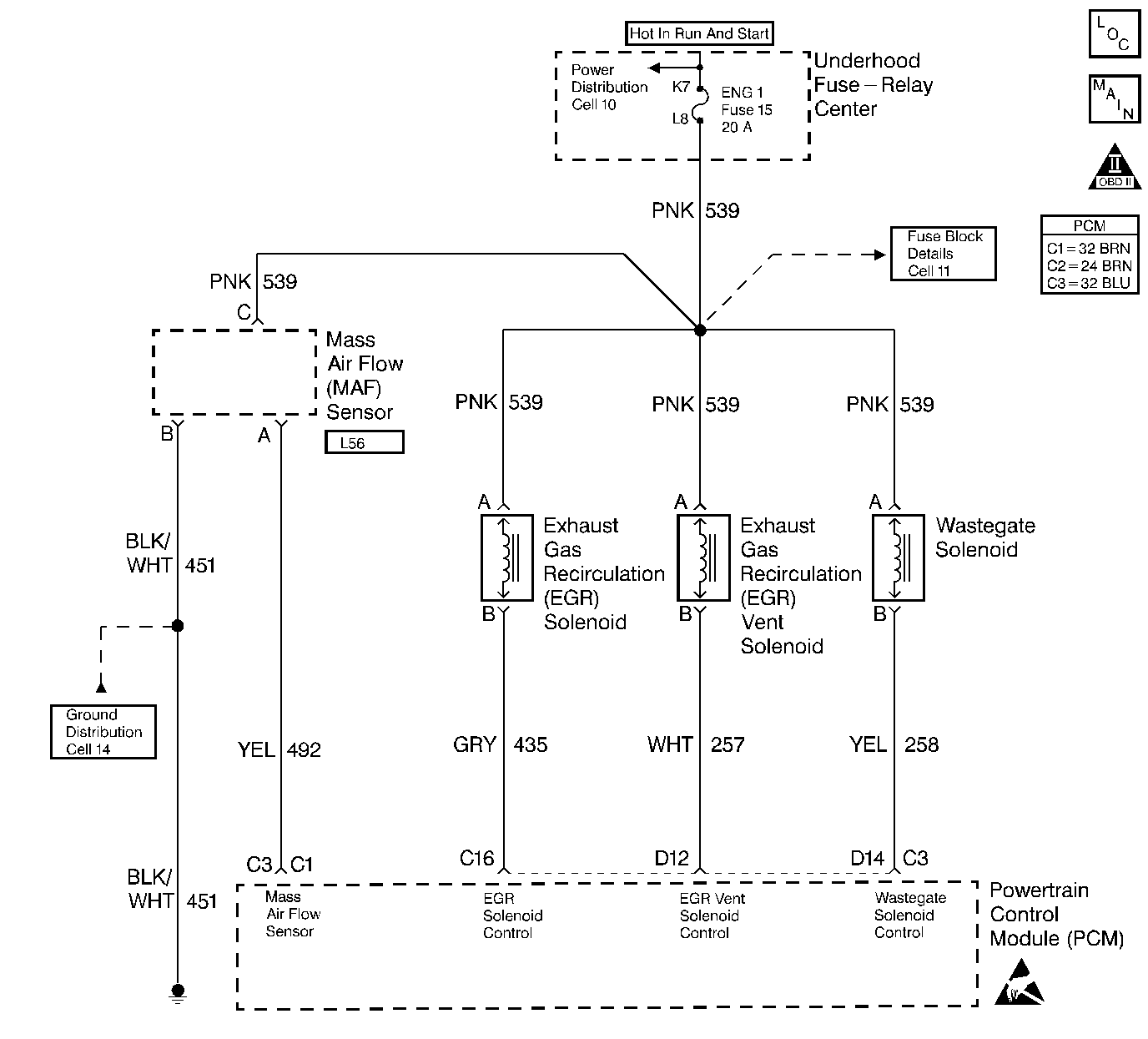
Circuit Description
The PCM operates a PWM solenoid to control the EGR valve. This solenoid is normally open. By providing a ground path the PCM energizes the solenoid which then allows vacuum to pass to the EGR valve. During normal operation, the PCM compares its desired MAF signal with the measured MAF signal and makes corrections in the duty cycle accordingly.
Conditions for Running the DTC
| • | The PCM performs this DTC diagnostic continuously. |
| • | Baro greater than 75 kPa. |
| • | The DTCs P0405, P0406, P0102 and P0103 are not set. |
Conditions for Setting the DTC
| • | Two of three EGR tests must fail (internal to PCM). |
| • | All diagnostic set conditions met for 2 seconds. |
Action Taken When the DTC Sets
| • | The PCM will shut down the EGR. |
| • | The PCM illuminates the malfunction indicator lamp (MIL) on the second consecutive drive trip that the diagnostic runs and fails. |
| • | The PCM records the operating conditions at the time the diagnostic fails. The first time the diagnostic fails, the Failure Records will store this information. If the diagnostic reports a failure on the second consecutive drive trip, the Freeze Frame records the operating conditions at the time of failure and updates the Failure Records. |
Conditions for Clearing the MIL/DTC
| • | The PCM will turn the MIL off after three consecutive trips without a fault condition. |
| • | A History DTC clears after forty consecutive warm-up cycles, if this or any other emission related diagnostic does not report any failures |
| • | The use of a scan tool. |
Diagnostic Aids
The most likely cause of failure is a condition causing low back pressure.
To run the diagnostic test the engine must be at operating temperature with the vehicle in drive at idle for approximately 1 minute. Then, with the vehicle in park, hold engine rpm steady between 1500 and 2100 rpm for 30 seconds. If the diagnostic test fails to run, vehicle must be driven.
The Adaptive Learn Matrix (ALM) is used to adjust the EGR vacuum control based on mass air flow (MAF). The ALM may change as a result of back pressure increases over the life of the vehicle or other engine system variations. The ALM is made up of sixteen cells (numbered from zero to fifteen) in which each cell covers a range of engine speed (RPM) and load (mm3).
Test Description
Number(s) below refer to the step number(s) on the Diagnostic Table.
Step | Action | Value(s) | Yes | No | ||||||
|---|---|---|---|---|---|---|---|---|---|---|
1 |
Important: Before clearing any DTCs, use the scan tool Capture Info to save freeze frame and failure records for reference, as the Scan tool loses data when using the Clear Info function. Was the Powertrain On-Board Diagnostic (OBD) System Check performed? | -- | ||||||||
2 | Are there any other EGR DTCs set? | -- | Go to the Applicable DTC Table | |||||||
Check for the following conditions:
Has a repair been performed? | -- | -- | ||||||||
4 |
Important: After repairs, the EGR ALM cells must be reset (under special functions in scan tool). Are EGR ALM cells reset? | -- | -- | |||||||
5 |
Does the Scan tool indicate the diagnostic Passed? | -- | ||||||||
6 | Does the Scan tool display any additional undiagnosed DTCs? | -- | Go to the Applicable DTC Table | System OK |
